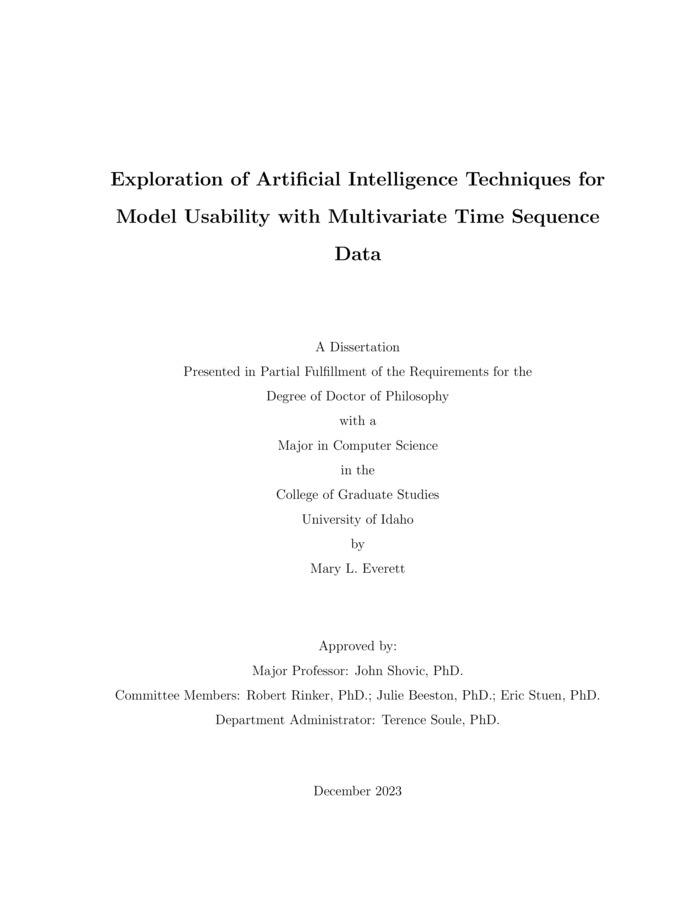Exploration of Artificial Intelligence Techniques for Model Usability With Multivariate Time Sequence Data
Everett, Mary Louise. (2023-12). Exploration of Artificial Intelligence Techniques for Model Usability With Multivariate Time Sequence Data. Theses and Dissertations Collection, University of Idaho Library Digital Collections. https://www.lib.uidaho.edu/digital/etd/items/everett_idaho_0089e_12727.html
- Title:
- Exploration of Artificial Intelligence Techniques for Model Usability With Multivariate Time Sequence Data
- Author:
- Everett, Mary Louise
- ORCID:
- 0009-0001-8606-1271
- Date:
- 2023-12
- Keywords:
- artificial intelligence genetic algorithms lstm neural networks precision agriculture quantitative association rules
- Program:
- Computer Science
- Subject Category:
- Computer science
- Abstract:
-
Artificial intelligence techniques are prevalent in many industries, but adoption barriers still exist for smaller organizations. Additionally, current deep learning artificial neural network designs seldom account for an evolving data landscape. However, particularly in the realm of precision agriculture, increasing artificial intelligence usage is an important step in expanding production efficiencies and potentially reducing climatic impacts. This dissertation looks at existing popular artificial intelligence techniques and identifies two candidates for further exploration: modularity in deep learning for increased data flexibility and quantitative association rule mining (QARM) in genetic algorithms for more explainable model outputs. Experiments using autoencoders as shared feature spaces for data broken up into different modalities were conducted for the deep learning models to assess the impact on modular networks on overall outputs. Quantitative association rule mining genetic algoritms were also run with and without a novel sequence extension to mine interesting datastream associations and create simple prediction models. Both techniques used two datasets: a weather dataset from the Jornada Basin Research Center and a biomedical dataset (VitalDB) of patient medical data. Ultimately, the modular deep learning models performed as well as the monolithic models with the added advantage of having a shared feature space for more flexibility when it came to adding specific sites for the Jornada Basin data. For the biomedical data, the modular models (which didn't have a concept of being broken up by location) did not provide an advantage over monolithic models. for the Jornada Basin data, the quantitative association rule mining genetic algorithm models performed slightly below the neural network predictors but had explainable output, and the sequence extension was more robust to sub optimal parameters than the non sequence models.
- Description:
- doctoral, Ph.D., Computer Science -- University of Idaho - College of Graduate Studies, 2023-12
- Major Professor:
- Shovic, John
- Committee:
- Rinker, Robert; Beeston, Julie; Stuen, Eric; Soule, Terence
- Defense Date:
- 2023-12
- Identifier:
- Everett_idaho_0089E_12727
- Type:
- Text
- Format Original:
- Format:
- application/pdf
- Rights:
- In Copyright - Educational Use Permitted. For more information, please contact University of Idaho Library Special Collections and Archives Department at libspec@uidaho.edu.
- Standardized Rights:
- http://rightsstatements.org/vocab/InC-EDU/1.0/

